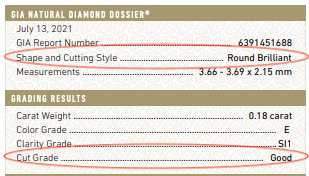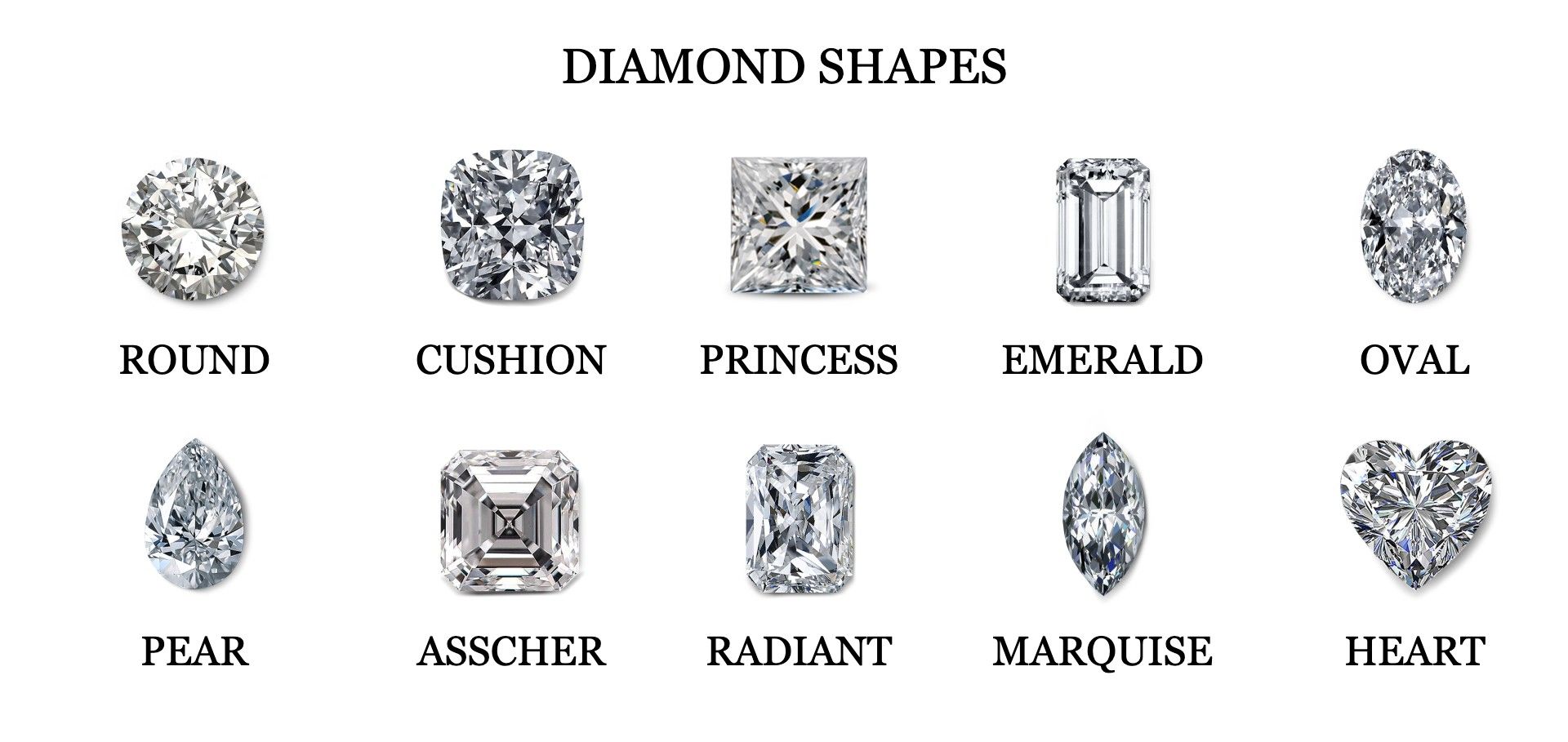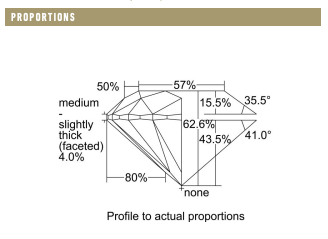Diamond Cut: Excellent vs. Very Good

If you want a gorgeous, sparkling diamond, choosing a well-cut one is a must. Learn more about Excellent vs Very Good diamond cut grades here.
Diamond Cut
Cut Styles and Cut Quality
Two aspects of a diamond’s cut are observed in laboratory reports: shape and quality. Both are simply referred to as Cut, which can be confusing. A diamond’s shape is usually listed in reports under “Shape and Cutting Style.” Cutting style refers to the way the facets of the diamond were cut and arranged. Whereas the overall quality of the diamond's cut is mentioned as “Cut Grade.”

Examples of diamond shapes are the Round Cut, Cushion Cut, Pear Shape, Emerald Cut, etc.

The cut grade is different from shape.
Only round-cut diamonds receive an official cut grade on their grading report. So, if you purchase a cushion diamond, its shape and cutting style will be listed on its grading report (for example, cushion brilliant, cushion modified brilliant), but cut grades will not be included.
Why Is Cut The Most Important Diamond Feature?

Cut is considered the most important C of the 4 Cs of diamonds.
Color, Clarity, and Carats are very visible diamond traits. For example, a stone can look more or less yellowish or larger or smaller in size. Cut, however, it’s not so obvious. It requires close inspection and knowing what to look for.
Diamonds are cut following a defined canon of ideal proportions that were found to offer the maximum light return possible. Each shape has its own standard and a range of acceptable variations.
Essentially, the closer a diamond is cut to its shape’s ideal ratios and proportions, the higher the Cut Grade will be.
Cut is critical because it determines how attractive a diamond can look. Brilliance, fire, and scintillation are all depending on a high-quality cut. If the pavilion it’s cut too deep, the light will leak through the bottom, making the stone less sparkly. Too shallow, and the light will bounce through the wrong facets making the diamond appear glassy.

GIA reports show a diagram representing the diamond’s profile where all proportions are noted. We recommend learning more about Diamond Anatomy to better understand how to interpret those percentages.
Symmetry and Polish
Symmetry and polish are also important aspects of cut that influence the final grade. They are specified in GIA reports in the “Additional Grading Information” section.
As the name indicates, symmetry refers to how well executed the cut is. The table, crown, girdle, and pavilion alignment can change how light travels inside the diamond.

Polish is the final stage in the cutting process. You can think of it as a very fine sanding aiming to leave a smooth finish on the diamond’s surface. Polishing is also key.

In fact, many kinds of blemishes are caused by polishing. And blemishes can affect a diamond’s Clarity grade.
GIA Cut Grades
GIA has developed its own grading scale for Cut. The possible grades are: Excellent, Very Good, Good, Fair, and Poor.

Besides the aspects mentioned earlier, GIA also observes Brightness, Fire, Scintillation, Weight Ratio, Durability, and other characteristics tightly related to Cut. Multiple tools and specialized equipment are used to measure each factor. And all of them are taken into account to assign a grade.
The AGS Cut Scale
GIA enjoys the fame of having invented the 4 Cs system, but they are not the only gemological laboratory or institution to develop quality scales.
The American Gem Society (AGS) has its own methodology for grading diamond Cuts. Their scale is more stringent, with ten possible grades divided into six categories that range from Ideal to Poor.

Excellent vs Very Good
The Excellent Cut Grade
At Ritani, you will notice our search filters allow you to choose between Ideal, Very Good, and Good cuts. Every Ideal cut diamond in our system corresponds to a GIA Excellent, an AGS Ideal, or an AGS Excellent.
The Very Good Cut Grade
Overall, and regardless of the laboratory behind the report, Very Good means the diamond is not of perfectly ideal proportions but is still of high quality.
Very Good graded diamonds will experience some degree of light loss. However, this difference isn’t very noticeable between grades that are so close. It’s fair to say with a Very Good grade, you can get a lot of sparkles and a high-quality cut for less.
As mentioned earlier, fancy shaped diamonds do not receive a cut grade from grading laboratories. At Ritani, we assign fancy shapes a cut grade based on their proportions. Very Good is the best cut grade a fancy shape can receive in our inventory.
Is A Very Good Cut Diamond Good Enough?
Yes! If you were to compare an Excellent graded diamond against a Very Good with otherwise identical characteristics, you wouldn’t be able to tell the difference.
Cut is examined and determined with magnification tools and equipment that measures light performance.
The difference between an Excellent and a Very Good cut it’s there, but it’s almost impossible to see it with the naked eye.
Excellent vs. Very Good Cut
In conclusion, the Excellent cut is a higher grade which will make it more expensive than a Very Good cut. At Ritani, we recommend that you choose an Ideal cut for a round-cut diamond and a Very Good cut for a fancy shaped diamond. Nevertheless, Cut alone doesn’t dictate value, and other factors such as Color, Carat, and Clarity also play an important role.
Cut is the most important factor in diamond quality because it can significantly increase or reduce a diamond’s fire, brilliance, scintillation, and durability. Diamonds that aren't cut well can even appear smaller than other diamonds of the same carat weight! But you shouldn’t choose a stone based on its cut grade alone.
An I Color diamond with an SI1 Clarity could have an Excellent Cut yet look less spectacular and cost less than a Very Good Cut graded diamond of superior Color and Clarity.
The difference between an Excellent and a Very Good grade can be a slight variation in sparkles but more significant in price. When choosing a Cut grade, remember to look at the other Cs as well.


